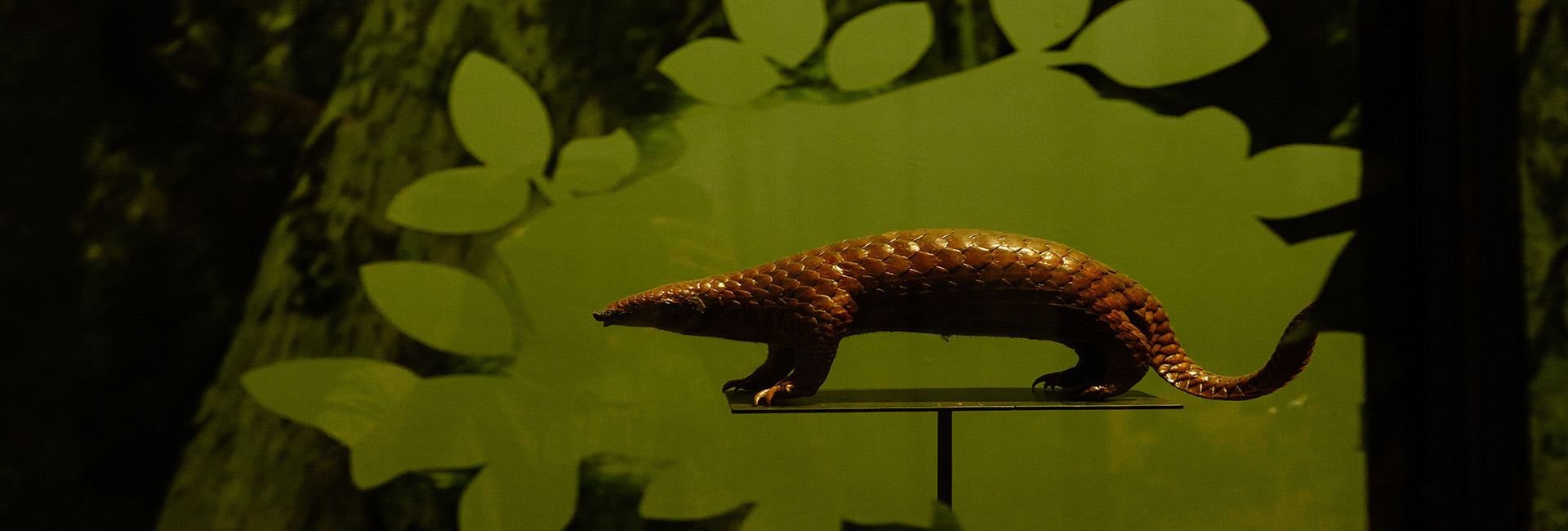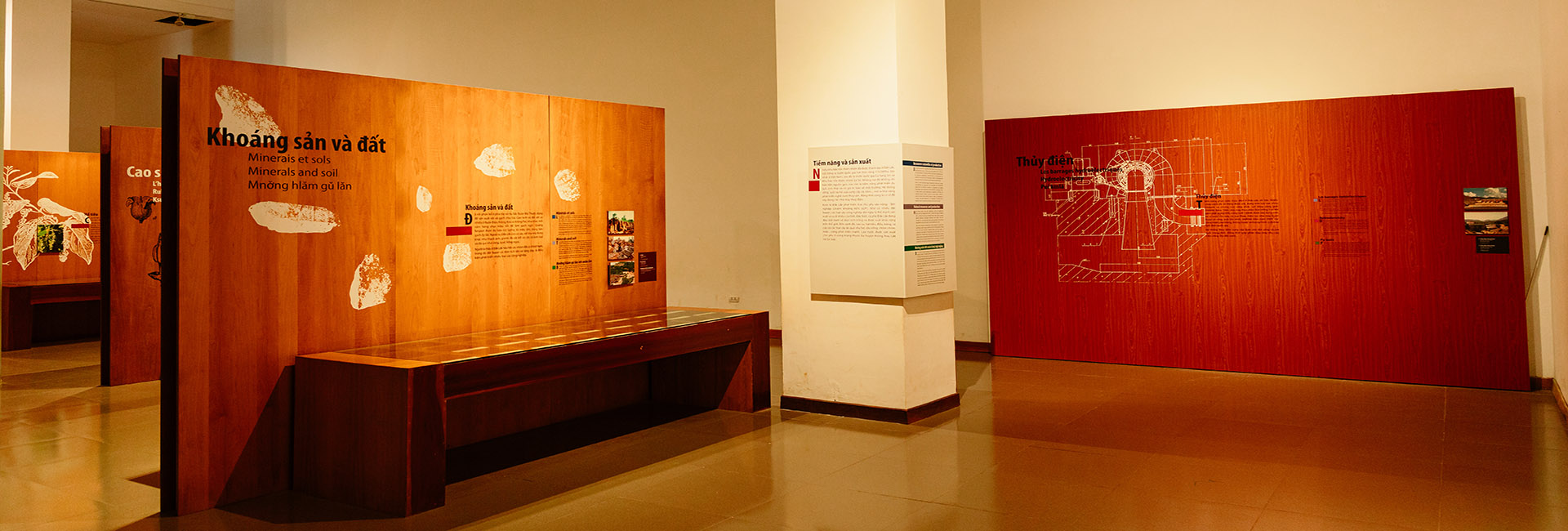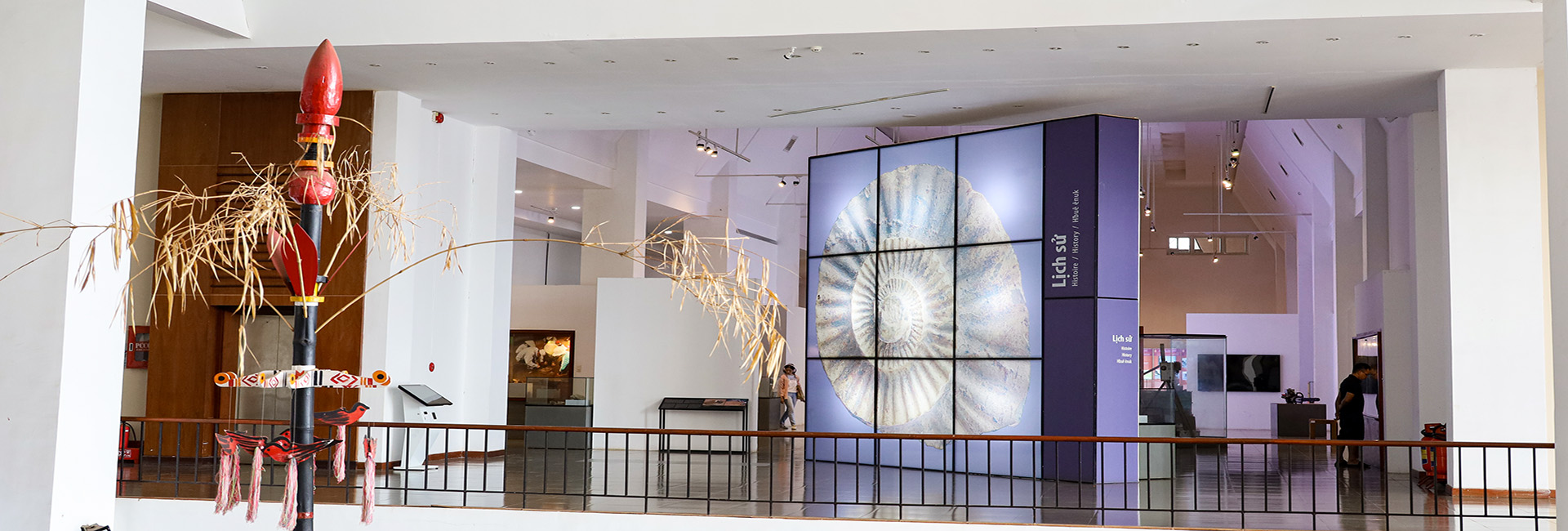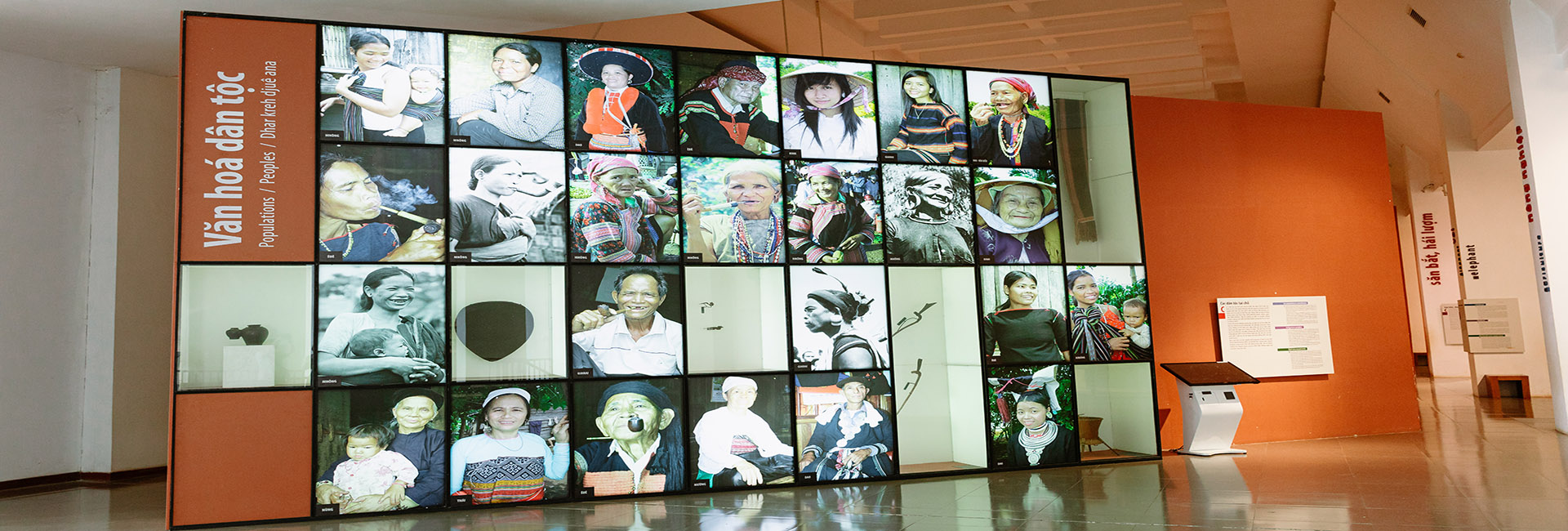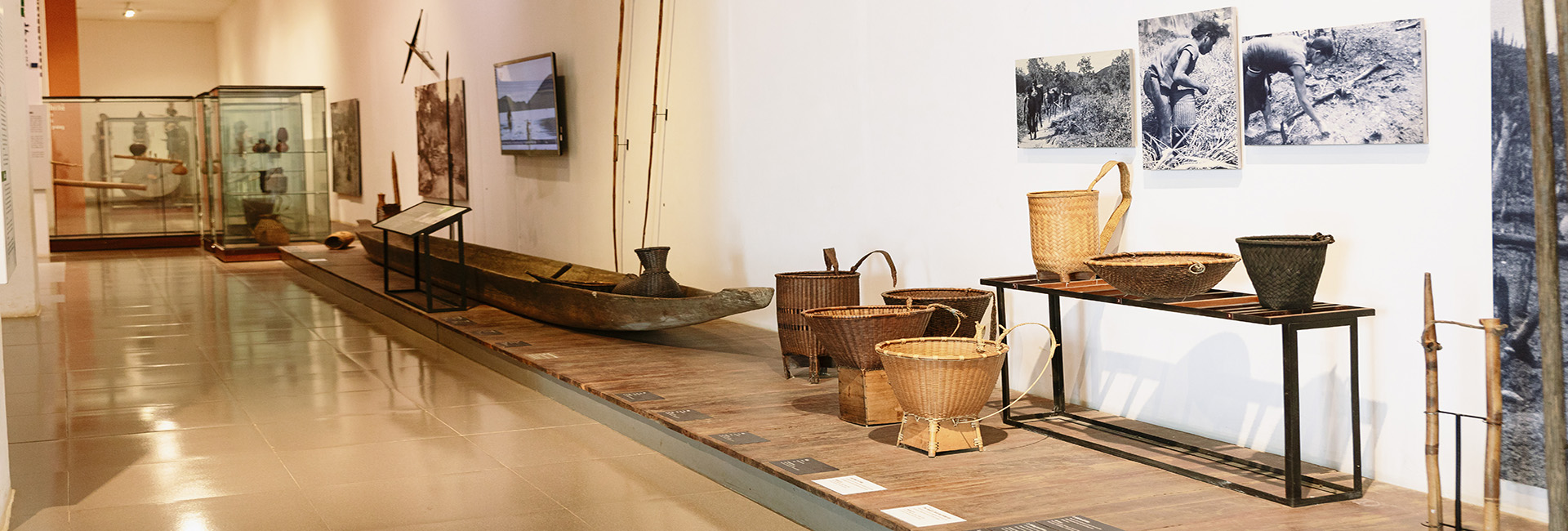THE TRADITIONAL EARTHENWARE WORK OF THE M’NONG R’LAM IN DONG BAK, LIEN SON LAK, DAK LAK
The traditional earthenware work of the M’nong R’lam is mainly practiced by women.
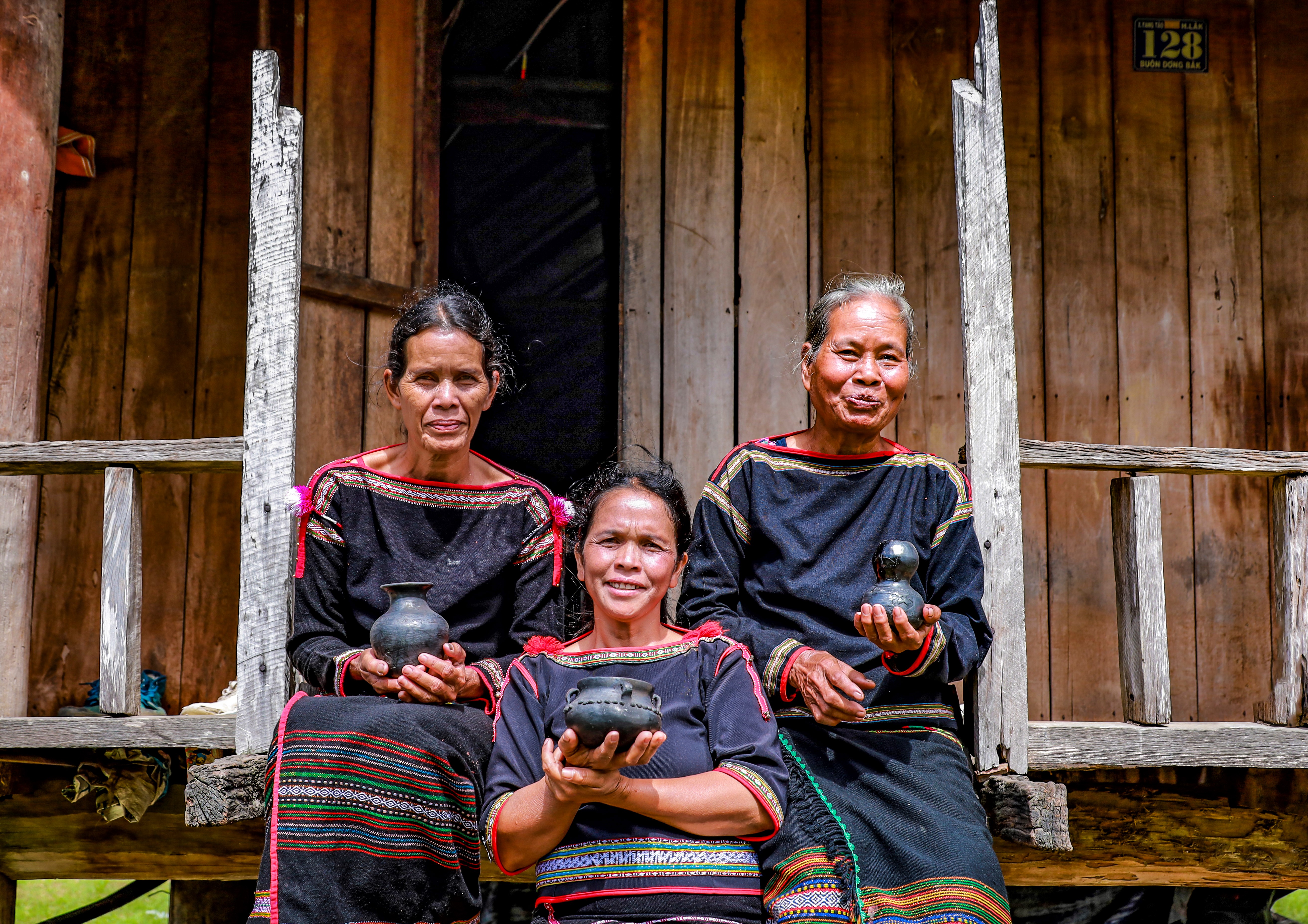
The main material is clay, and the simple tools used to make products are pestles, mortars or wooden posts, thin bamboo sticks, bamboo rings, smooth pebbles, and wet cloths. However, to create a finished earthenware product needs spending many steps, in which collecting clay is the most time-consuming and labor-intensive one.
Early in the morning, the earthenware makers walk about from three to four kilometers to the foot of Chu Yang Sin Mountain to collect pure clay that is a fine, smooth and less impurities so that quality of the earthenware products is ensured, then carry it home.
The earthenware-making process begins with the clay pounding stage. The tools used for pounding include a wooden mortar, which is also placed upside down and used as a stand for shaping the earthenware products.
The M’nong R’lam shape their earthenware entirely by hand without using a potter’s wheel. The earthenware maker moves around the wooden post in a clockwise direction to form the shape and use a bamboo ring and a wet cloth to smooth and refine it. After shaping the clay, the earthenware makers wait for the product to lose some moisture and dry partially. Then, they carve decorative patterns with a bamboo stick, wooden stick or porcupine quill. The earthenware is continually dried in the sun for about 20-30 minutes, scraped off excess clay inside, and polished outside with a pebble, then dried for 3-4 sunny days. Finally, the earthenware products are fired outdoors until they turn red-hot, and then buried in rice husks to dye particular black.
The earthenware products are inspiration from daily life. In the past, they mainly included household items such as steamers, pans, bowls, and pots. Today, they are also crafted into decorative and souvenir items such as elephant or buffalo figurines and flower vases, combining aesthetic appeal with traditional cultural value.
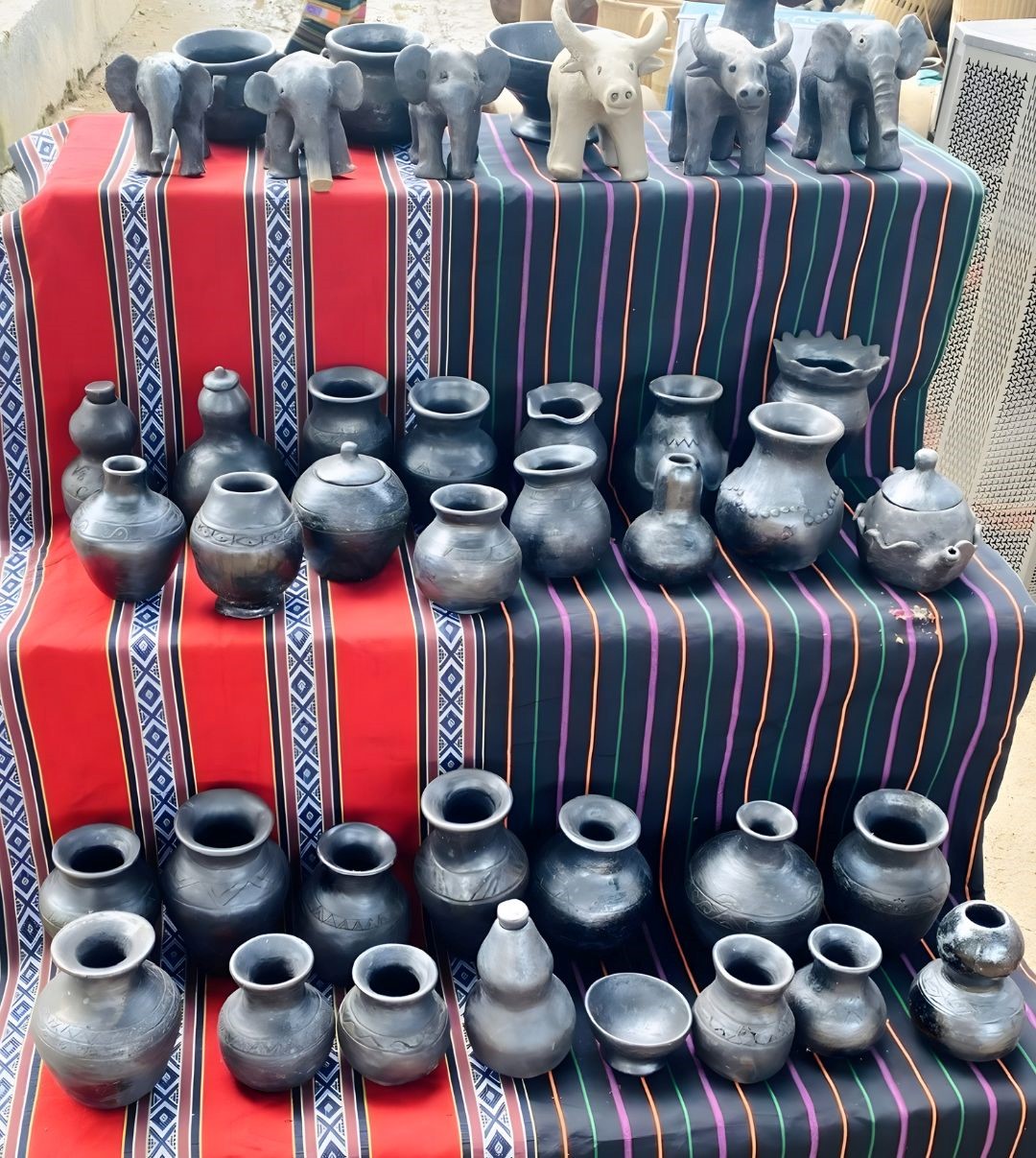
The M’nong R’lam earthenware work not only reflects the artisans’ skills, patience and creativity but also serves as a vivid testament to the enduring culture of this community.
Bích Tuyền



